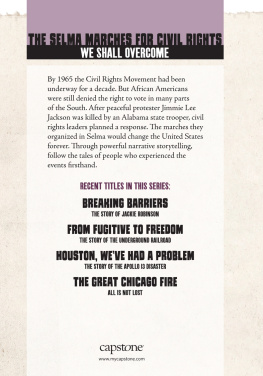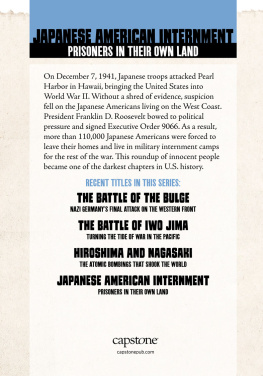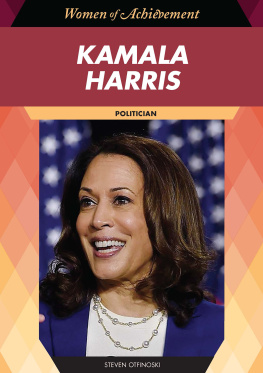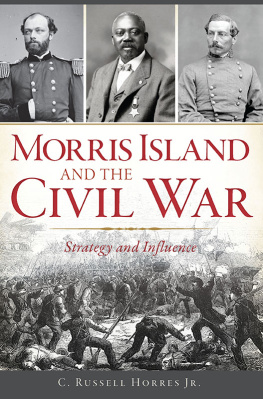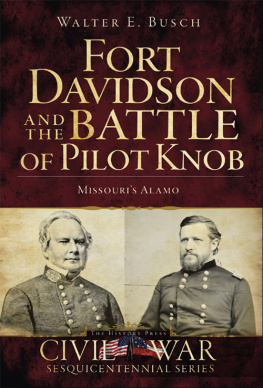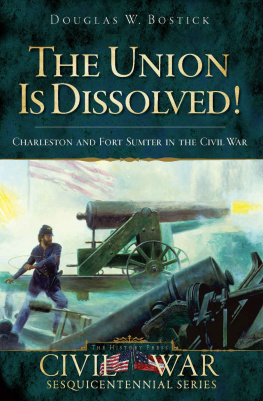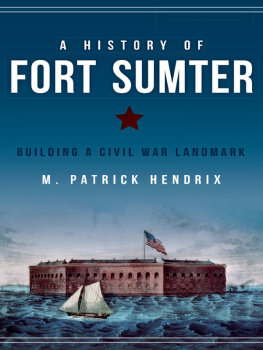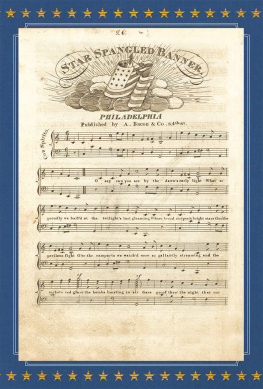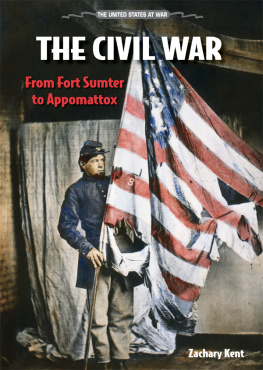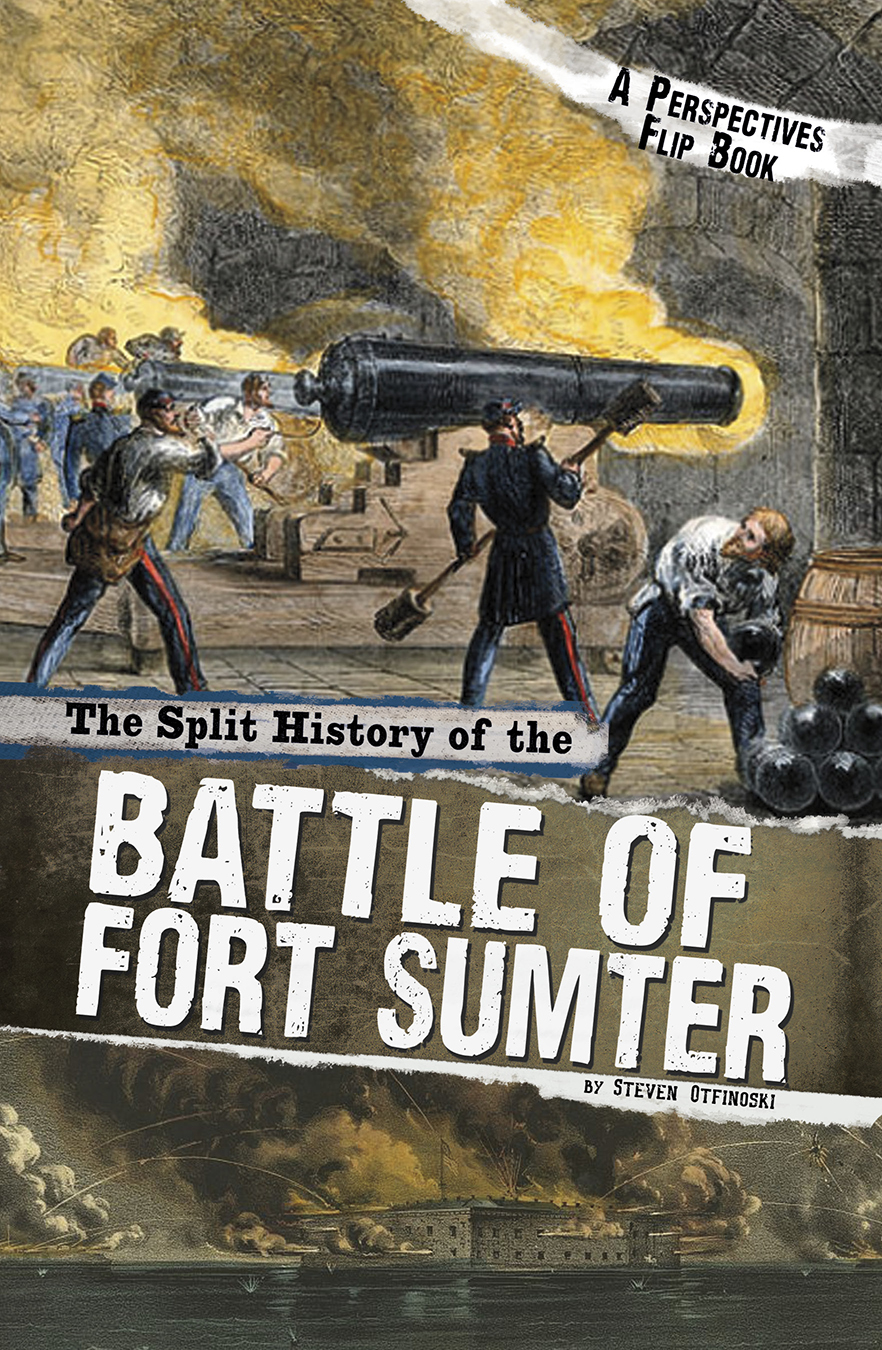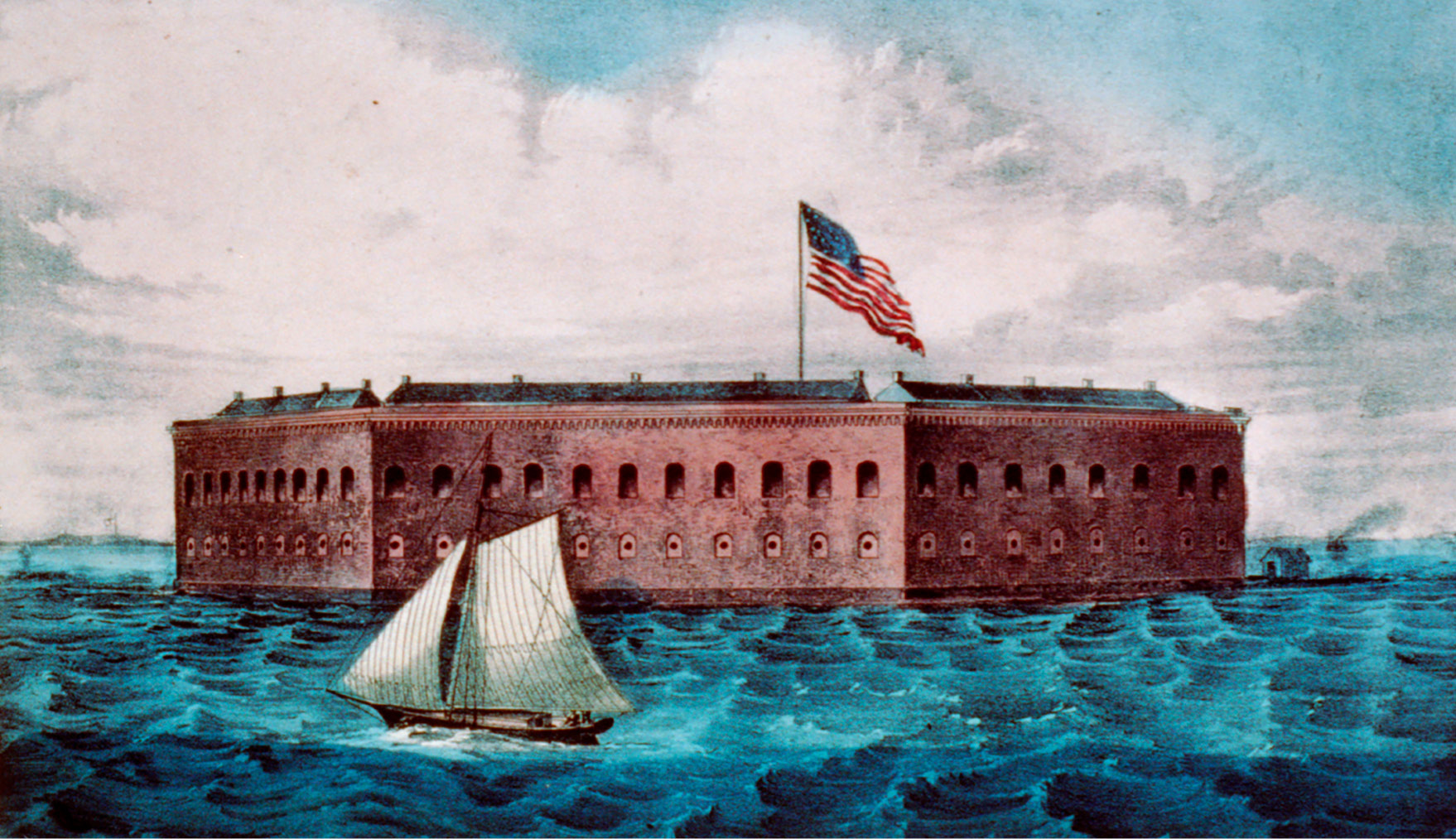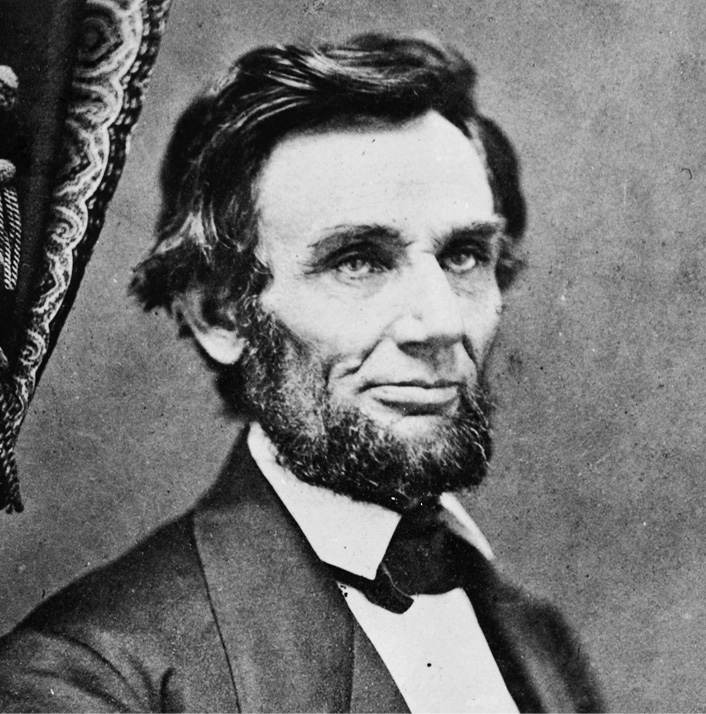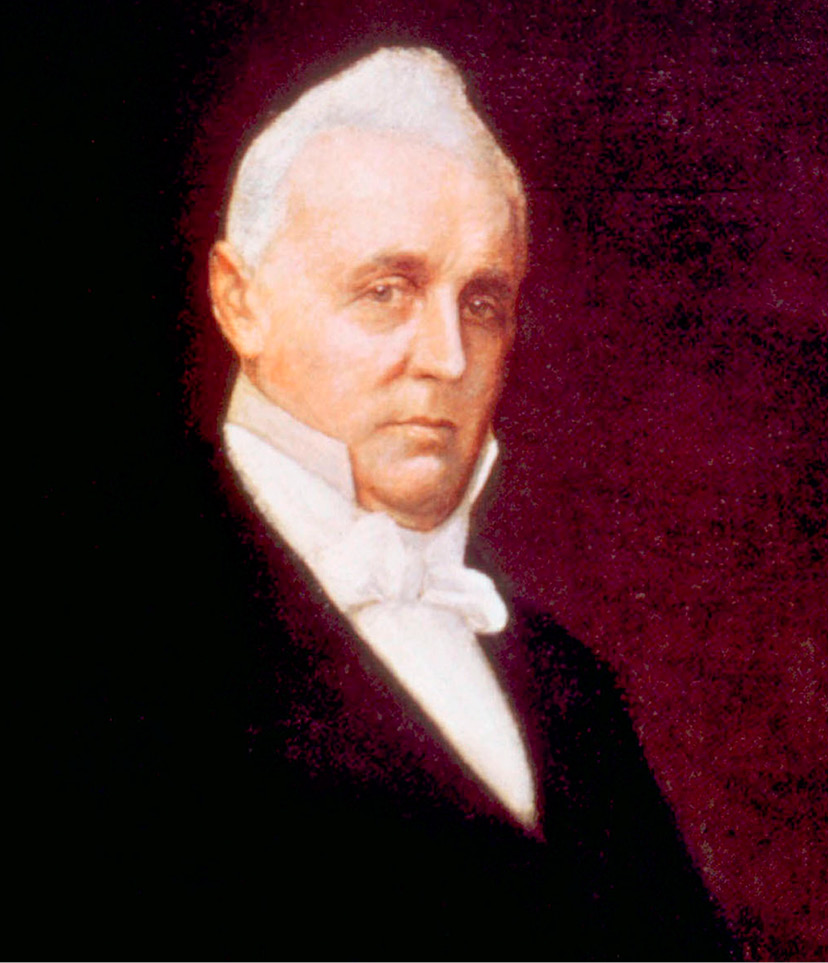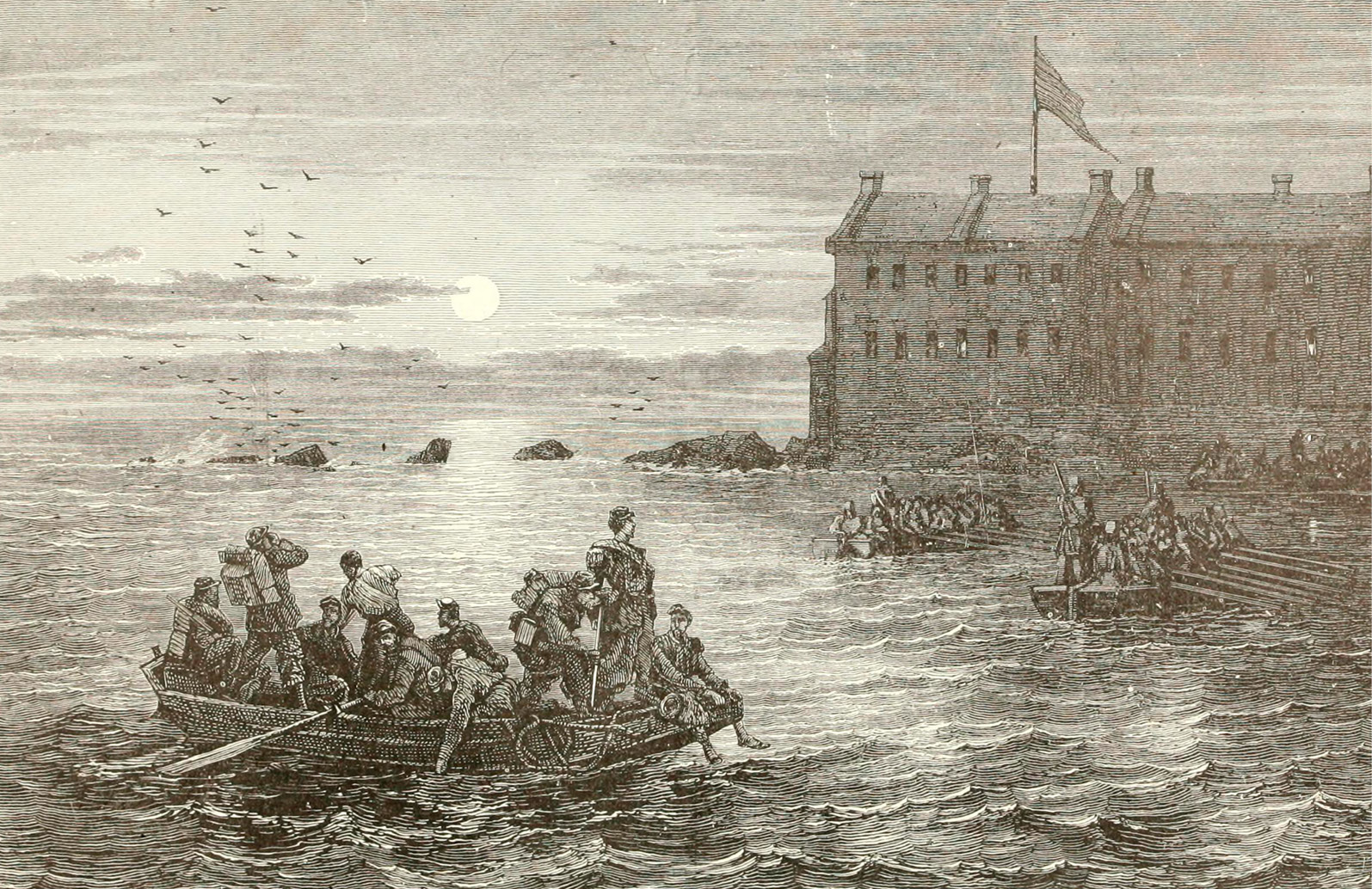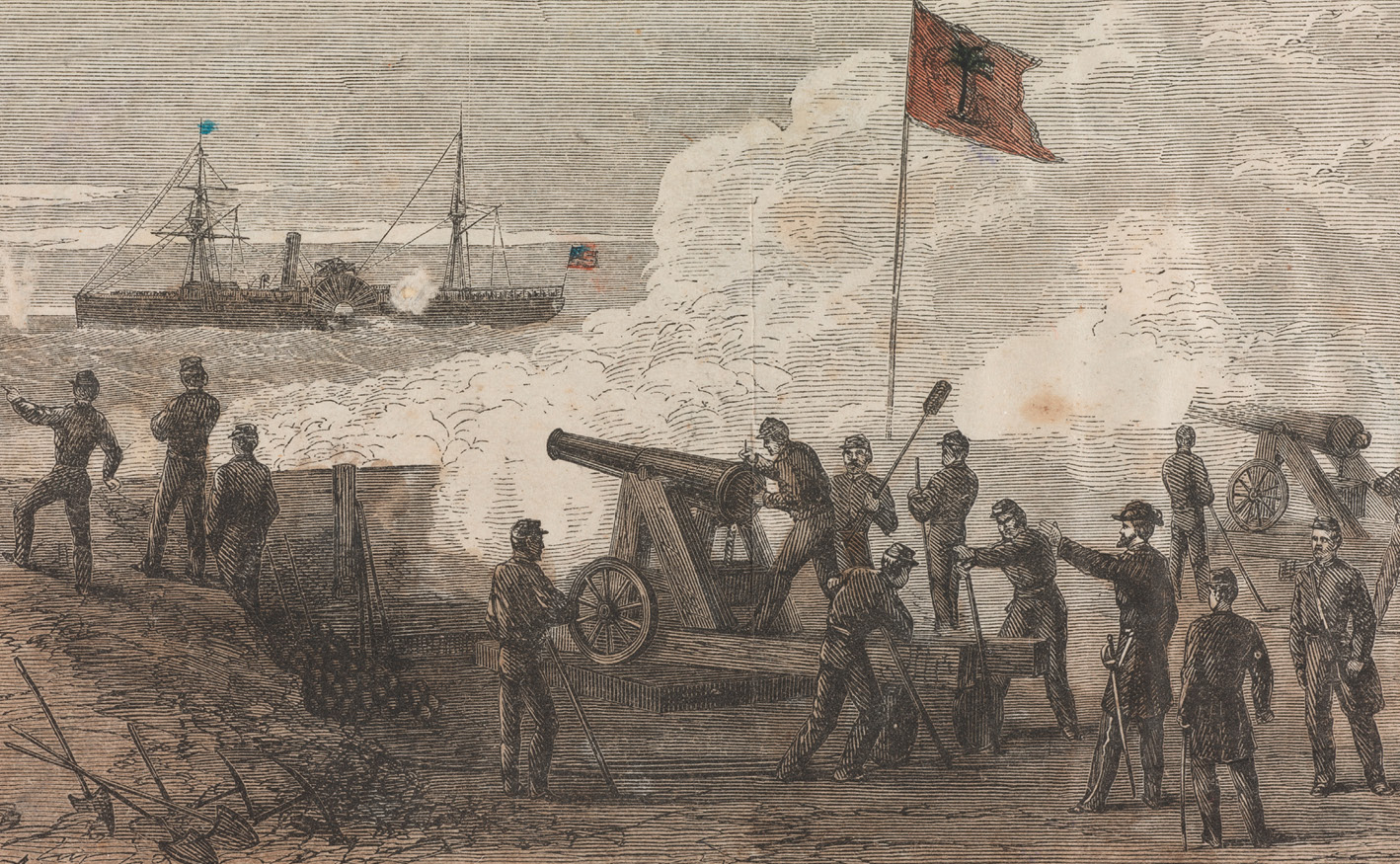CHAPTER 1
TENSION IN CHARLESTON HARBOR
A pril 1861 brought a welcoming spring to Charleston, South Carolina. Charleston Harbor, one of the Souths most beautiful waterways, was covered with a blanket of blue sky filled with fleecy white clouds. However, this natural beauty was at odds with the drama that was playing out nearby. Three of the four forts that ringed the harbor were armed with cannons and guns of all sizes in preparation for battle. All this firepower was aimed at Fort Sumter, the fourth and newest fort. Built of brick and stone, Fort Sumter was perched like a jewel at the harbors entrance. Why were the other forts and batteries aiming their guns at Fort Sumter?
The American flag flew over Fort Sumter in the spring of 1861, but the Confederates wanted to change that.
The question could be answered by the flag that flapped in the brisk breezes above Fort Sumterthe flag of the United States. South Carolina and six other southern states were no longer a part of the United States and did not pledge their allegiance to its flag.They had formed their own nationthe Confederate States of America. Once just another federal fort, Fort Sumter was now enemy territory.
This ill will between the northern states, which represented the Union, and the southern Confederate states began long before that fateful month of April 1861. It was a conflict that had been brewing since the U.S. Constitution had been adopted in 1788. The Constitution called for a balance of power between the federal government and the governments of the individual states. But this balance was threatened by the issue of slavery.
Enslaved Africans had been brought to America since the early 1600s. By the 1700s, slavery was thriving in the South, where the agricultural economy depended on unpaid labor to support its large plantations and smaller farms. In the North, the economy was becoming more based on manufacturing and trade, so unskilled labor was less in demand and slavery gradually disappeared.
A growing number of northerners opposed slavery on moral grounds as well. Some became , where the population of a new territory or state would vote to determine whether it would be a slave state or a free state. But these compromises were only temporary solutions to a more complex problem.
THE ELECTION OF ABRAHAM LINCOLN
The Republican Party was born in the 1850s. It included groups that opposed slavery and its spread. It also favored economic and political policies that benefited the North. In 1860 the Republicans nominated Abraham Lincoln, a former congressman from Illinois, as their presidential candidate. Lincoln, a Unionist who believed in a strong federal government, was a moderate on the slavery issue. He believed slavery should not be abolished in the South, but it also shouldnt be allowed elsewhere in the country.
The on slavery. On Election Day, the Democratic vote was split, and Lincoln, who received only 39.8 percent of the popular vote, still won by more than 100 electoral votes.
Southerners were outraged at his election. Hatred of Lincoln and the North was particularly strong in South Carolina. Leaders of the state feared that Lincoln would take away their states rights and end slavery, even though he had never said that.
The election of President Abraham Lincoln in 1860 angered many southerners.
TENSIONS MOUNT
By early December 1860, of 85 soldiers at Fort Moultrie. Castle Pinckney and Fort Johnson were unoccupied at the time. Fort Sumter was still under construction and was only occupied by workers.
President James Buchanan
Buchanan was personally opposed to for turning over the forts were still ongoing.
But tensions continued to rise. South Carolinas leaders feared what Lincoln might do to establish federal power in their state once he was in office. The state legislature called a convention to consider the question of secedingbreaking away from the United States. On December 20, South Carolinas lawmakers voted 1690 to secede.
In Washington of South Carolina would try to force him and his men out of the fort? Anderson decided he wasnt going to sit around and wait for that to happen.
FORT MOULTRIE
Fort Moultrie has a long and distinguished history. The first fort built on the site held British warships at bay in 1776 during the Revolutionary War (17751783) and was later named in honor of its commander, Colonel William Moultrie. The fort fell into neglect after the Revolutionary War, so in 1798, work began on a second fort on the site as part of a coastal defense system.
In 1804 a hurricane destroyed the second fort. The third and final Fort Moultrie, a five-sided masonry structure, was completed in 1809. After the Civil War, Fort Moultrie was modernized with new cannons and concrete reinforcements. It was finally Fort Sumter National Monument.
CHAPTER 2
HOLDING DOWN THE FORT
M ajor Anderson was facing hard choices. If he remained at Fort Moultrie and the South Carolinians attacked, his troops would be extremely vulnerable. The fort was old, in poor condition, and would be difficult to defend. However, Fort Sumter, near the mouth of the harbor, was a brand-new fort made of solid granite. It would certainly offer a stronger defense. On the night of December 26, 1860, Anderson made his move. He gave his officers just 20 minutes to have their men ready to travel. Boats were engaged to transport the soldiers.
Under the cover of darkness, Major Robert Anderson moved his troops from Fort Moultrie to Fort Sumter.
A few men stayed behind at Fort Moultrie to protect the ships if the enemys guard boats should spot them and attack. The departing soldiers took off their coats and covered their muskets so they would look like laborers returning to Fort Sumter if spotted by the guards.
The actual laborers at Fort Sumter were stunned to see the soldiers arrive. Workers who favored the South were hustled onto the boats and sent to the mainland. Those loyal to the Union remained at the fort to continue its construction.
Andersons bold actions were condemned by the South Carolinians. They quickly occupied Fort Moultrie with their own soldiers and sent a trio of leaders to Buchanan, demanding that he give up Fort Sumter and evacuate the federal troops. The president was urged not to do so by several of his Cabinet members. Instead, on January 5, 1861, Buchanan approved sending Star of the West, a merchant ship loaded with supplies and 200 soldiers, to Fort Sumter. However, he did not send word to Anderson that the ship was coming.


